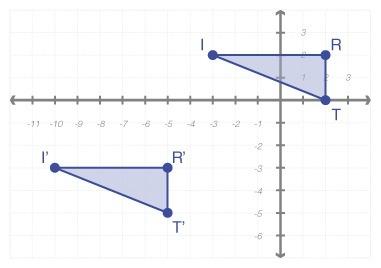
Mathematics, 26.03.2020 20:08 jen12abc82
Identify the end behavior of the function ƒ(x) = −6x5 + 7x3 − 5x + 8. A) ƒ(x) → +∞, as x → −∞ ƒ(x) → +∞, as x → +∞ B) ƒ(x) → −∞, as x → −∞ ƒ(x) → −∞, as x → +∞ C) ƒ(x) → −∞, as x → −∞ ƒ(x) → +∞, as x → +∞ D) ƒ(x) → +∞, as x → −∞ ƒ(x) → −∞, as x →

Answers: 2


Another question on Mathematics

Mathematics, 21.06.2019 14:30
If given an equation of a line such as -1/2x+6 how would you create an equation of a line parallel and perpendicula to this line that goes through another point such as (4,10)
Answers: 1

Mathematics, 21.06.2019 21:20
The edge of a cube was found to be 30 cm with a possible error in measurement of 0.4 cm. use differentials to estimate the maximum possible error, relative error, and percentage error in computing the volume of the cube and the surface area of the cube. (round your answers to four decimal places.) (a) the volume of the cube maximum possible error cm3 relative error percentage error % (b) the surface area of the cube maximum possible error cm2 relative error percentage error %
Answers: 3

Mathematics, 22.06.2019 00:00
What is the effect on the graph of the function f(x) = x2 when f(x) is changed to f(x) − 4?
Answers: 1

Mathematics, 22.06.2019 01:10
Evaluate 8x2 + 9x − 1 2x3 + 3x2 − 2x dx. solution since the degree of the numerator is less than the degree of the denominator, we don't need to divide. we factor the denominator as 2x3 + 3x2 − 2x = x(2x2 + 3x − 2) = x(2x − 1)(x + 2). since the denominator has three distinct linear factors, the partial fraction decomposition of the integrand has the form† 8x2 + 9x − 1 x(2x − 1)(x + 2) = correct: your answer is correct. to determine the values of a, b, and c, we multiply both sides of this equation by the product of the denominators, x(2x − 1)(x + 2), obtaining 8x2 + 9x − 1 = a correct: your answer is correct. (x + 2) + bx(x + 2) + cx(2x − 1).
Answers: 3
You know the right answer?
Identify the end behavior of the function ƒ(x) = −6x5 + 7x3 − 5x + 8. A) ƒ(x) → +∞, as x → −∞ ƒ(x) →...
Questions


Mathematics, 26.02.2021 20:30


Mathematics, 26.02.2021 20:30

Mathematics, 26.02.2021 20:30



Computers and Technology, 26.02.2021 20:30



Mathematics, 26.02.2021 20:30

Biology, 26.02.2021 20:30


Social Studies, 26.02.2021 20:30

Mathematics, 26.02.2021 20:30

Mathematics, 26.02.2021 20:30

Social Studies, 26.02.2021 20:30

Mathematics, 26.02.2021 20:30

History, 26.02.2021 20:30

History, 26.02.2021 20:40




